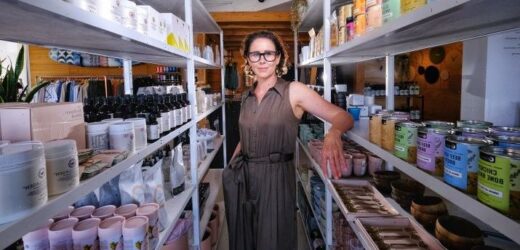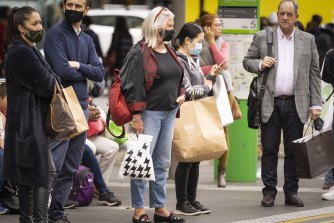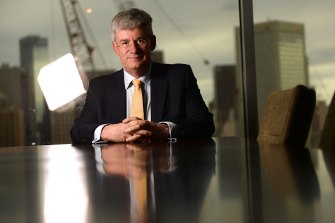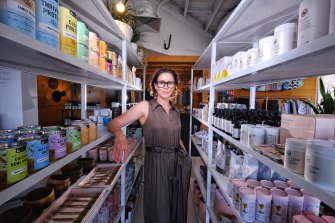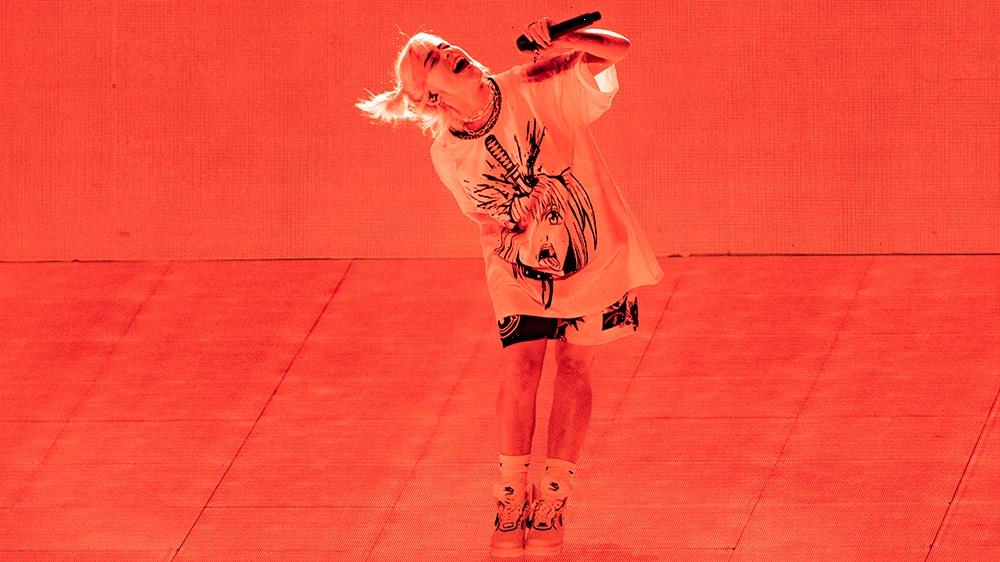We have made our live coverage of the coronavirus pandemic free for all readers. Please consider supporting our journalism with a subscription.
Economists are backing Victoria’s economy to roar back to life in November and December as pent-up spending demand from cashed-up shoppers is unleashed in time for Christmas.
But there are warnings from the profession that Australia could soon be divided into separate travel blocs, with Victoria, NSW and the ACT open to each other but closed off by hard borders around the “COVID-zero states”.
Shoppers in Bourke street in December last yearCredit:Eamon Gallagher
Independent economist Saul Eslake told The Age and The Sydney Morning Herald that Victoria and NSW were in recession but the states’ economies were likely to bounce back strongly once their respective lockdowns ended, a view backed on Monday by ANZ bank senior economist Adelaide Timbrell.
Mr Eslake believes that the closed borders between Victoria NSW and the ACT will soon open as their governments converge on a “living with the virus” approach to the pandemic but that the rest of the country is likely to remain off-limits.
Another leading Victorian economist, Leonora Risse of RMIT, said economic recovery was possible even in a nation effectively cut in half by closed state borders, particularly if Australia’s busiest travel route – between Sydney and Melbourne – was reopened.
Mr Eslake said he expected a recovery to be driven by households flush with cash after months in lockdown and starved of spending opportunities.
“There is every reason to expect that Victoria and NSW will rebound once restrictions are raised,” Mr Eslake said.
“Not many businesses have folded and governments have been shovelling lots of money at people so they have lots of money in the bank.
“Households have squirrelled away $167 billion more dollars in bank deposits since February last year.”
But interstate travel to destinations beyond Victoria, NSW or the ACT looks to be still some way off, according to Mr Eslake.
“What I suspect, is that the country sort of divides into two,” he said.
“We could in effect have two countries and there are some people who actually advocate that it is perhaps the least-worst option in the circumstances in which we find ourselves.”
Movement is already effectively free between West Australia, Tasmania, South Australia and the Northern Territory as well as most parts of Queensland and the governments of those states and territories have made clear their reluctance to open borders if case numbers remain high elsewhere in Australia.
HSBC Bank chief economist Paul Bloxham also noted on Monday the sharp divide between Victoria, NSW and the ACT and what he described as “the zero tolerance, elimination states” which had not committed to opening their borders.
Independent economist Saul Eslake.Credit:Pat Scala
Announcing Victoria’s road map out of lockdown on Sunday, Premier Daniel Andrews said he wanted the border with NSW reopened “as soon as we possibly can” but on Monday he said could not nominate a date for that to happen.
But Dr Risse said even a limited opening of borders would enable a partial revival of the domestic short-stay tourist trade, worth $66 billion a year, and the vital Sydney-Melbourne air route, which is a mainstay of the nation’s $27 billion-a-year business travel sector.
“For NSW and Victoria to be thinking about joining forces as a more open economy, there’s probably a lot of economic value to be gained because we know that’s such a heavily populated flight route, and facilitates not just holidays and leisure, but business activity which is really needed to keep the economy strong,” Dr Risse said.
“Economically, there’s more to be gained by Victoria and New South Wales and the ACT opening up their borders to each other, rather than keeping them closed. At the same time, I think it makes a lot of sense for the states where COVID is currently contained to retain those border closures even though the tourism industries in those states are suffering”
Ms Timbrell said a return of non-essential retail in mid-November was set to unleash a wave of consumer spending in NSW and Victoria strong enough to drive the national economy, as measured by gross domestic product, back into positive territory in the December quarter reporting period.
“When people come out of lockdown, not only do they immediately go back to their normal level of spending, you actually see a small period where household spending outperforms by quite a lot,” she said.
“We always see a big spike in household spending in the week before Christmas, with lots of unorganised people, and we’re increasingly seeing really strong spending on Black Friday [the last Friday in November].
“If we can see Sydney and Melbourne out of lockdown for half of Q4 [December quarter], that’s going to be a really great start for recovering some of the losses that we’re expecting out of the Q3 [September quarter].”
Kellie Langeliers is preparing for a busy few months at her business, Plover Wellbeing. Credit:Enrique Ascui
Kellie Langeliers told The Age that she and her 20 staff at Plover Wellbeing in Mornington were confident of being rushed off their feet as soon as they re-opened their doors, which she believes will be early November.
“Last November, we were 20.6 per cent up on the November before,” she said.
“In December we were about 15 per cent up. In December, because we sell lots of gifts, we’re always run off our feet. But even so, 15 per cent growth in December is quite extraordinary.”
Far from closed borders posing a threat to Ms Langeliers’ business, the Plover owner says the Mornington Peninsula has emerged as a mecca for Melburnians barred from travelling further afield.
“We’ve got this captive audience here now who’ve got nowhere to go,” she said.
“The peninsula will remain a favourite destination, and I think people will be more nervous this year about borders slamming shut.”
Stay across the most crucial developments related to the pandemic with the Coronavirus Update. Sign up to receive the weekly newsletter.
Most Viewed in Politics
From our partners
Source: Read Full Article
